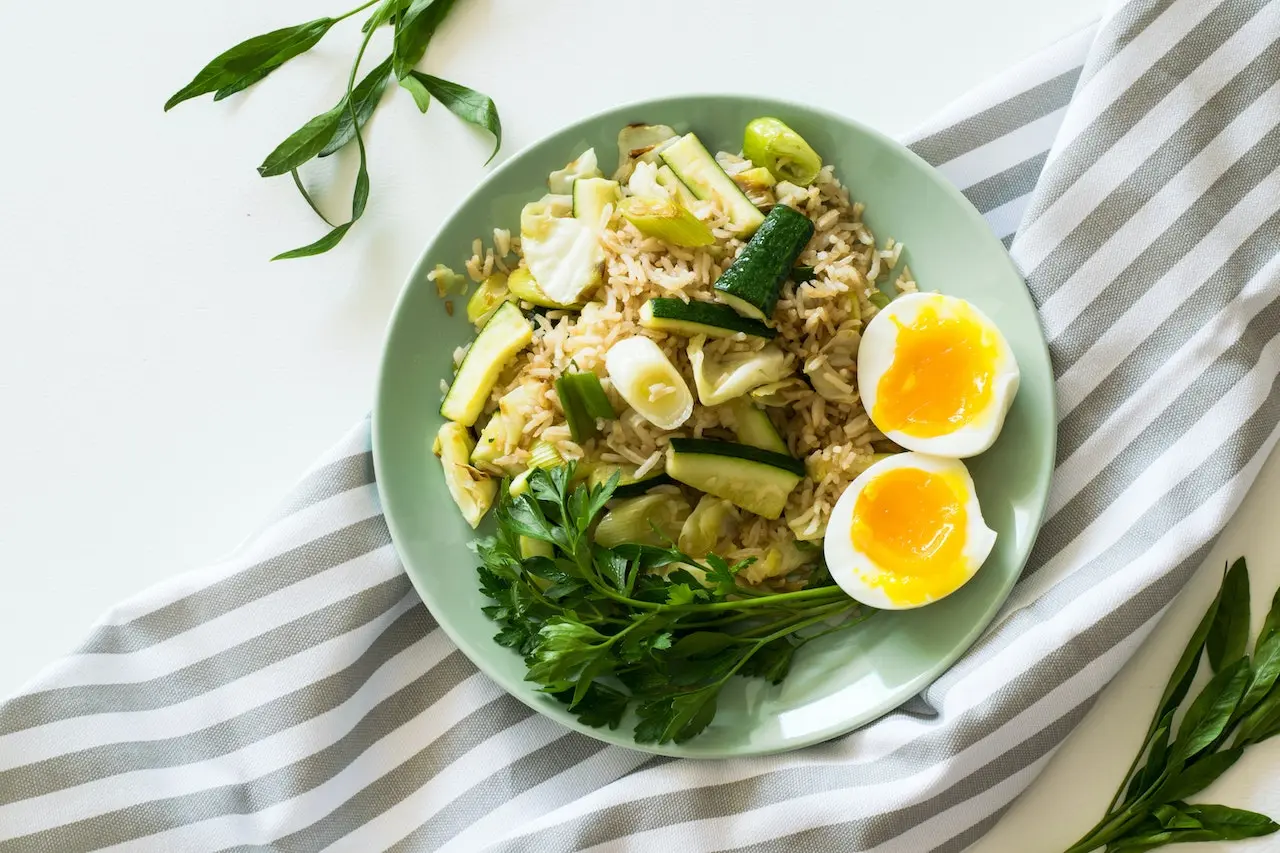- Dubai, UAE
- info@drsadiyalifestyle.com

Menu



As a nutritionist, I frequently encounter these common inquiries: “Is it okay for me to include rice in my diet?” or “I’m quite fond of rice; can I continue enjoying it?” Another prevalent question is, “Must I stick to brown rice even if I don’t particularly like it?” Despite the variations in phrasing, all of these questions essentially boil down to a single concern: Can individuals with diabetes include rice in their meals?
The short answer is YES, you can certainly enjoy rice in your diet if you have diabetes. However, by making a few smart changes to your approach, you can significantly improve your blood glucose levels while still savouring your favourite rice dishes.
Rice, a dietary staple found in most Asian households, often fills our kitchens in ample quantities. However, the rice typically consumed is white rice, which undergoes a refining process that removes the nutritious bran and germ, leaving behind the starchy endosperm. Consequently, white rice is low in fiber, polyphenols, and essential micronutrients. Moreover, it boasts a high glycaemic index (GI) and glycaemic load (GL), indicating that it induces a significant post-meal blood glucose spike.
Certainly not. You can make informed choices and enjoy rice while managing its impact on your blood glucose levels effectively. Let’s explore key factors contributing to the post-meal glucose surge and how we can counter them smartly.
Portion Control: First and foremost, it’s essential to address the portion size of rice. A cup of rice contains around 40-50 grams of carbohydrates, equivalent to approximately 100 grams on one medium-sized plate—a substantial amount. To manage this, aim to reduce your rice portion to a quarter or, at least, one-third of your plate.
Rice Variety: Selecting the right rice variety is crucial. The choice of rice can significantly impact your meal. White rice comes in various varieties, each with its unique structure and starch composition. Rice contains two primary types of starch: amylose and amylopectin. The proportion of these starches in a rice variety plays a significant role in determining its post-meal glucose response.
To make an informed choice, it’s essential to understand how different rice varieties affect your blood sugar levels. Generally, rice with higher amylose content tends to result in a lower post-meal glucose response. Let’s take a closer look at a few popular rice varieties and their respective glycaemic indices (GI):
Combination with Other Foods: Rice is rarely consumed in isolation. It’s typically part of a mixed meal. Pairing rice with sources of fiber, protein, and healthy fats can significantly reduce post-meal glucose impact. For instance, an Indian meal often combines rice with vegetables and beans, while a Middle Eastern meal might include rice with meat, vegetables, and healthy fats. This combination helps regulate glucose release.
Eating Order: Emerging research suggests that the order in which you consume your meals can affect post-meal glucose levels. Instead of consuming a mixed meal within 10-15 minutes, start with fiber-rich vegetables, followed by protein, and then rice. This approach promotes delayed glucose absorption, with fiber acting as a protective barrier. Eating slowly and chewing well will also make you more mindful of your portions and help you enjoy your meal. This indirectly impacts your blood glucose levels too.
Added Fiber: Incorporating fiber into rice-based meals slows digestion and glucose release. You can enhance your meal’s fiber content with natural sources like beans and legumes, like boiled chick peas, green beans, sprouted beans, non-starchy vegetables in vegetable salads, and cooked or sautéed vegetables. Also, adding a teaspoon of wheat germ or oat bran can add variety and much needed fibre benefits too.
Pre-processing of Rice: Some rice pre-processing methods can alter its glucose absorption rate. In many Asian and West African countries, people prefer to eat parboiled rice over milled rice. It is a process of hot water treatment of rice grain at high pressure, which alters starch digestibility by increasing resistant starch content hence the glycaemic index (rise in blood glucose) is reduced. Parboiled rice is a good choice if you appreciate its flavour. Another excellent option is brown rice, where the grains are minimally processed, so they retain their bran and germ, providing more nutrients than white rice.
Cooking Methods: Research has shown that the methods used to cook rice significantly impact the digestion and absorption of carbohydrates from rice. Additionally, cooking and refrigerating rice before consumption increases its resistant starch content, leading to slower glucose release. Consider batch-cooking rice and reheating it when needed to enjoy your favourite dishes. A recent research review concluded that cooking rice at a higher temperature and shorter time is preferable to slow heat cooking for a post-meal glucose spike.
Bottom line
All types of whole food can fit into a healthy meal pattern to manage diabetes or reduce the risk of developing it. Eating a balanced diet of vegetables, fruits, low-fat dairy, lean proteins, beans and a combination of whole (brown rice) and refined grains (white rice) is key to maintaining healthy blood sugar levels.
By making mindful choices and incorporating these strategies, you can continue to enjoy your favourite rice-based meals while maintaining optimal blood glucose levels.
Talk to your nutritionist about how you can personalize your rice choices according to your carbohydrate needs.
+971528254859
Copyright © 2022 |
Powered by Digital Exponents
WhatsApp us